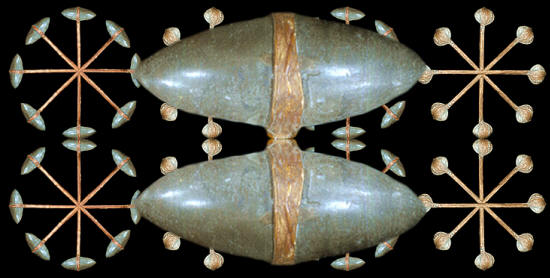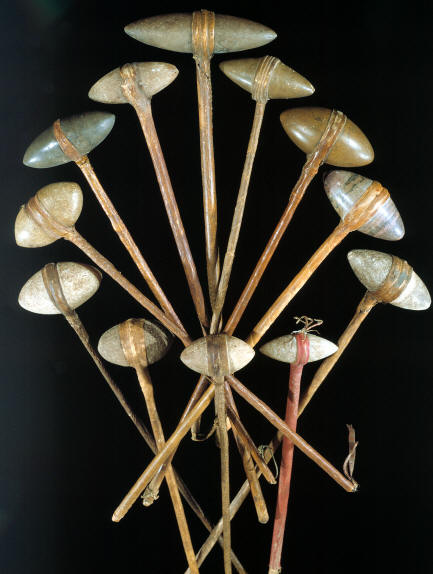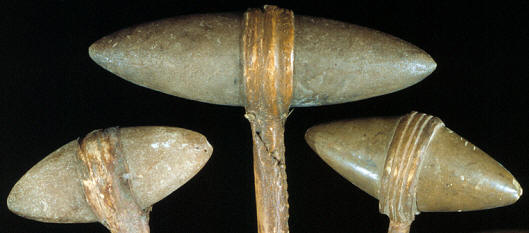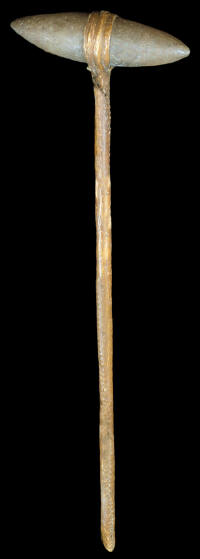|
||
|
||
|
"Every Plains warrior carried some kind of club when he went raiding or to war."---------1972, Thomas E. Mails, "The Mystic Warriors of the Plains," p. 464. "The warrior selected the club head with great care, choosing smooth and colorful stones from stream beds that would not split on impact."---------1972, Thomas E. Mails, "The Mystic Warriors of the Plains," p. 465.
"Every tribe in America used
clubs, but after the adoption of more effectual weapons, as the bow and
the lance, clubs became in many cases merely a part of the costume, or
were relegated to ceremonial."---------1912,
Frederick Webb Hodge, "Handbook of American Indians North of Mexico,"
part 1, p. 313.
One of the most common weapons used by humans for as long as there have been disputes between people are clubs. It's a good bet they were even used by Homo erectus hundreds of thousands of years ago. They are even used today in modern societies by police forces around the world. Museum collections exhibit an endless array of clubs that represent a wide diversity of cultures who once lived on small islands or large continents. More varieties of clubs have been made than there are visible stars in the sky. The Plains Indians of the central United States made several different styles of stone-headed clubs. War clubs with double pointed stone-heads, like the examples in this report, represent classic plains Indian weapons. They are easy to recognize and stand out as a style all their own. |
||
|
Every Indian tribe in America used clubs. They were produced in a wide variety of styles. Some types were hafted with metal knife blades, horns or stone. Others were carved from single pieces of wood or bone. The examples illustrated in this article show one of the classic varieties that were used by the plains Indians. The majority of these have double pointed stone heads that were hafted onto long handles. |
||
|
The earliest war clubs had stone heads with short handles and were carried on foot. After the introduction of the horse the handles were lengthened. The longer handle gave the weapon a longer reach. A short handled club had less of an advantage on the battlefield if the attacker was mounted on horseback and could strike from farther away. The larger weapon was easier to carry on horseback. They were carried under his belt or, when fitted with a wrist strap, hung from a saddle. |
||
|
||
|
Stones for clubs were carefully selected. People making the clubs were choosing stones that do not break easily, like quartz and granite. Many club heads were also made from colorful stones. Creek and river beds were a common source for ready-made smooth surface stones. Club heads generally weigh between two to eight pounds. |
||
| CONTINUE ON TO PAGE TWO | ||
|
"REFERENCES"
1912,
Hodge, Frederick Webb "Handbook of American Indians North of Mexico,"
part 1, p. 313. |
||






